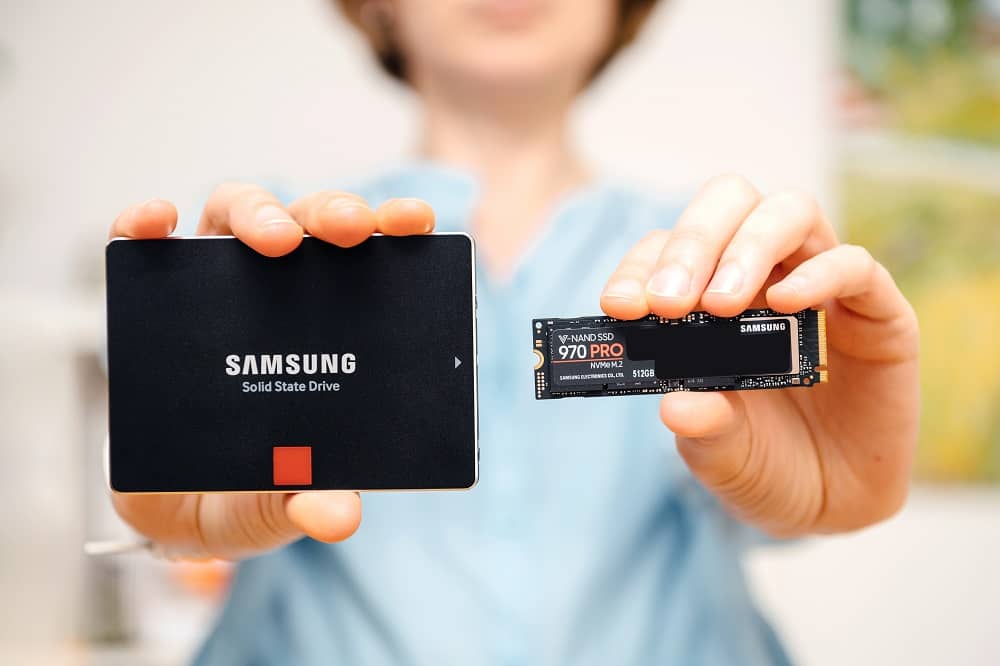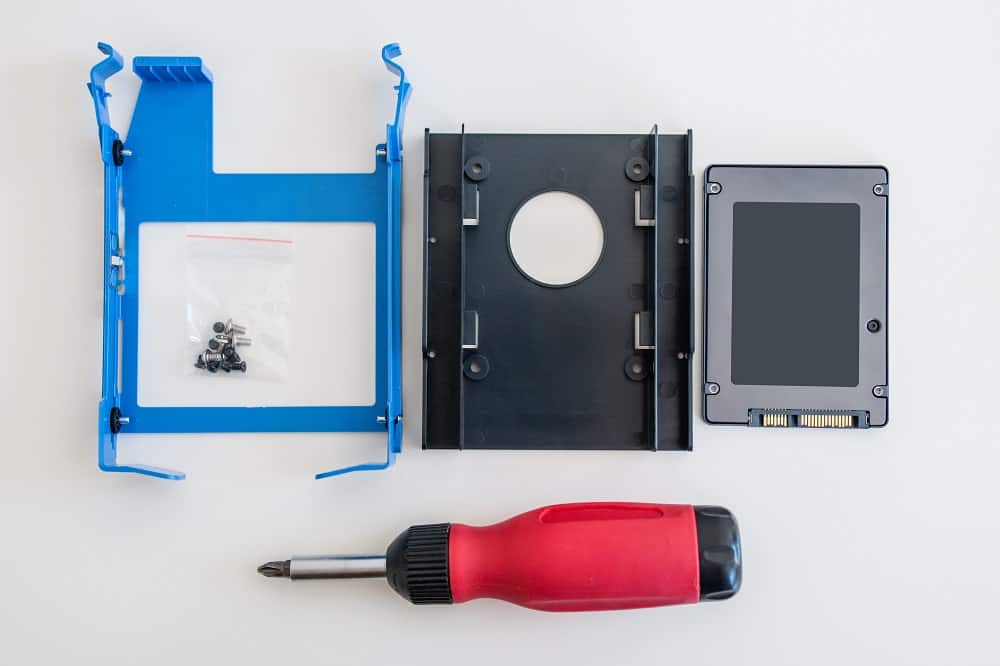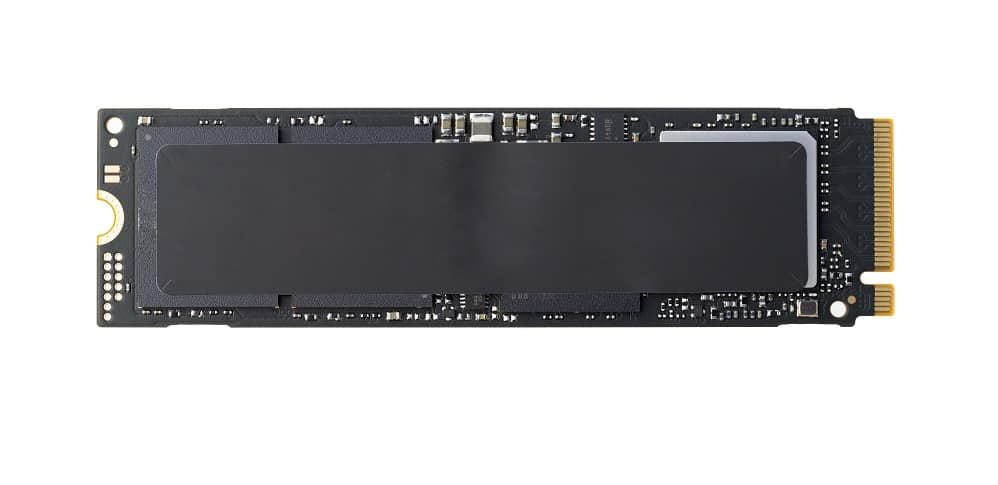Up until a few years ago, the Hard Disk Drive (HDD), an electro-mechanical mass storage device, had been the main data storage device found on all personal computers, both desktop and portable.
While the HDD has served its purpose well, power hungry applications, including operating systems, that need to retrieve and store large amounts of data quickly, have found the HDD floundering, being unable to keep up with the pace.
The savior has been the Solid State Drive (SSD), offering increased throughput and fast response times. A typical 2.5-inch SSD is at worst an order of magnitude faster than a typical HDD. Apart from speed and performance, the smaller form factor SSDs are ideal for thin, compact systems where space is at a premium.
However, with this increased speed have come choices with a number of interfaces and form factors.
Types of SSD: Form Factors and Interfaces

While the price of SSDs has been continually dropping, it is the improved access speeds, response times, reliability, and longer lifetimes that have made SSDs a very attractive proposition, as they head into their fourth generation. But choosing an SSD is not always straightforward.
Regardless of whether the system is a laptop, desktop / tower PC, or a server, the choice of SSD is primarily determined by the types of interfaces and connections available in the system. The interface dictates the transfer rate of data between the drive and the host system.
Most SSDs currently in use are of the 2.5-inch form factor. The 2.5-inch drive form factor was originally used for hard drives, and the 2.5-inch SSD employs the same size case so as to fit into the existing drive bay slots on PCs and laptops.
However, the 2.5-inch case has some drawbacks when it comes to SSDs, such as reduced cooling efficiency while also being bulkier than necessary.
2.5-inch SATA SSD

The 2.5-inch form factor is what is most commonly found in desktop and laptop computers, and 2.5-inch SATA SSDs connect to the computer system over the Serial Advanced Technology Attachment (SATA) bus interface.
The 2.5-inch form factor has dimensions of 69.85mm x 100mm x 7mm (W x L x H).
SATA revision 3.0 offers a physical layer speed of 6.0 Gbit/s. Accounting for the 8b/10b encoding to achieve DC-balance and bounded disparity, yields a maximum possible transfer rate of 600MB/s (4.8 Gb/s).
The best SATA SSDs perform at around 560 MB/s sequential reads (the rate at which large contiguous blocks of data are read at adjacent locations) and 510 MB/s sequential writes (the rate at which large contiguous blocks of data are written to adjacent locations).
2.5-inch NVMe SSD
The 2.5-inch NVMe SSD has the same form factor as the 2.5-inch SATA SSD, but uses the NVM Express (NVMe) interface over the PCI Express bus, which is much faster than the SATA bus.
The NVMe specification was specifically designed for SSDs and is a much more efficient interface. It comprises a high queuing control interface and a host-to-device protocol for SSD commands.
Compared to the 600MB/s transfer rate of SATA, the newer NVMe standard can achieve rates as high as 3,500 MB/s. Compare also the input/output operations per second (IOps) of 50,000 IOps for SATA against 500,000 IOps for NVMe.
M.2

M.2 - also known as the Next Generation Form Factor (NGFF) - is a specification that refers to the more recent type of internally mounted expansion card which replaces the mSATA standard. This newer specification also provides for dual-sided layouts, which can yield greater capacity for the same footprint.
The M.2 specification allows for connection to the following buses via the same connector (only the first two are used for SSDs):
- PCI Express bus, 3.0 or newer, up to four PCI Express lanes
- SATA 3.0
- and USB 3.0
Keying notches identify which interface is supported. For example, B and M keying notches maximize compatibility for SATA, while M keying only, for NVMe PCIe.
M.2 is more compact than the 2.5-inch form factor, with drives being 22mm wide, and 30mm, 42mm, 60mm, 80mm or 110mm in length. Manufacturers will usually refer to a drive as shipping in XXYY form factor with XX being the width and YY the length. For example, type 2280 would mean the drive is 22mm wide by 80mm long.
M.2 SSDs come with SATA or NVMe interfaces, with the M.2 SATA interface being the less expensive of the two.
M.2 SATA SSD
The M.2 SATA differs only in dimensions from its 2.5-inch SATA SSD counterpart, both offering the same throughput of 600 MB/s. It is simply more compact than the 2.5-inch.
M.2 NVMe SSD
This is one of the newest type of SSDs, combining the faster NVMe interface with the compact M.2 form factor. As with the 2.5-inch NVMe SSD, it offers a throughput of 3,500 MB/s and up to 500,000 Iops, but with lower power consumption than the 2.5-in NVMe.
mSATA SSD
mSATA is another compact format, smaller than 2.5-inch (about one quarter the size of the 2.5-inch) but not as small as M.2, with a width of 30mm and length of 50.95mm. mSATA SSDs are not as common, being primarily used in systems where space is at a premium, like tablets and notebooks.
As the name suggests, it uses the SATA interface and therefore offers a bus speed of 6GB/s.
Conclusion
SSDs are available in a combination of form factors and supported interfaces. A lot depends on the system on which the SSD will be installed, which interfaces and how much space are available. Cost is another consideration, with SATA SSDs being generally cheaper.
In terms of performance, NVMe SSDs, regardless of form factor, are much faster (compare 600MB/s throughput with 3,500 MB/s). Of the three form factors, namely 2.5-inch, M.2 and mSATA, M.2 is the most compact and 2.5-inch the largest.
Most laptops currently in use, can only accommodate the 2.5-inch SATA SSD, while newer laptops have the M.2 NVMe slot and can take advantage of an SSD with a higher throughput.
Desktop and tower systems up until recently were limited to SATA connections, but newer motherboards now come with NVMe slots. If the motherboard has a free 4x PCIe slot that supports PCIe 3.0 or greater, NVMe SSD sleds can be installed (PCIe cards that can hold up to four M.2 NVMe SSDs).
NVMe can provide as much as six times the throughput of SATA, making it the ideal interface for applications like graphics and video rendering, large database manipulation, simulations, and of course, gaming.

